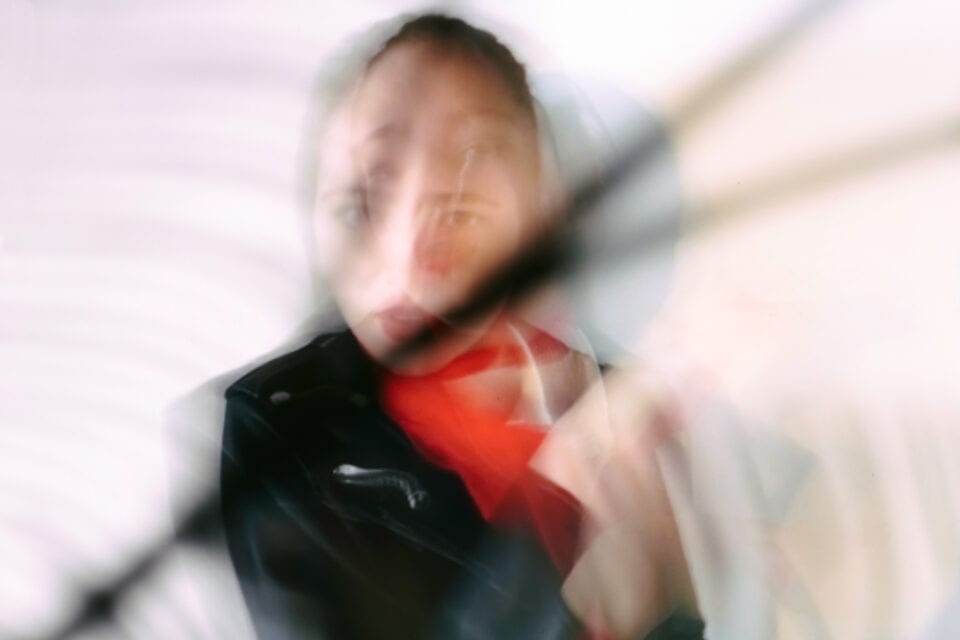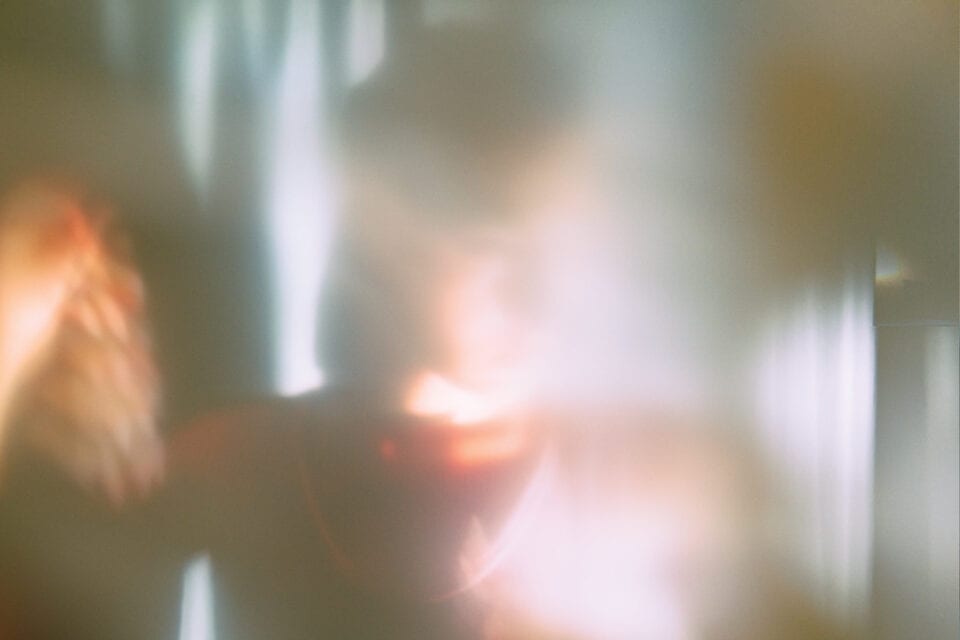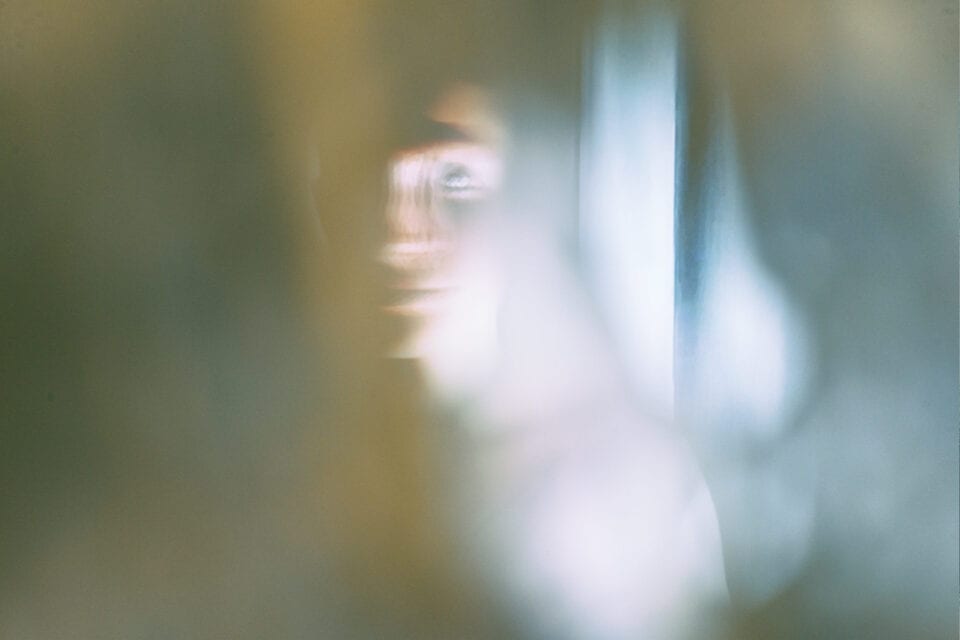Michael Matzko is a Cincinnati-based photographer. As the first segment of a larger project On Being Human, which asks the fundamental question: “What does a healthy world look like?” Matzko began working on a series during the Covid-19 lockdown, entitled The Self Isolation Project. The works depict the multitude of emotions captured throughout a combination of in-person and remote sessions. The images were created using multiple layers to mirror the complexity of the world we are currently experiencing.
A: In Issue 96 of Aesthetica, we displayed works from The Self Isolation Project. How does this series fit into your larger project On Being Human?
MM: The Self Isolation Project really represented a first step towards exploring the realisation that you are part of a larger whole of what it means to be human. In 2020, so many people globally were faced with life that was drastically different than what they were used to. They spent large amounts of time either alone, or with a very small group of people, and were essentially forced to keep themselves company.
In talking with many people, I believe, for many, it was somewhat of a personal renaissance, to learn about and explore a core within themselves which has been missing. They questioned fundamental challenges like food, exercise, mental health, emotions, priorities, and most significantly, what is most important to them and their lives. It also set an aesthetic and technical framework for the rest of my project, so the style is somewhat uniform although the emphasis may change. So the project is very core to On Being Human.

A: Tell me how you have been conducting the sessions for The Self Isolation Project. Have you found the process to be simply a practical result of the current Covid-19 situation, or have you found the process stimulating in its own right?
MM: When I thought about the concept of remote photoshoots, I didn’t want to create photos by capturing a FaceTime image screenshot or having a camera remote controlled at the model’s location to try to get a “normal” image. Instead, I wanted to acknowledge that a different time requires a different expression – both from my model as well as from my own thoughts and emotions.
I wanted to create something which embodied the angst, the questioning, the yearning, the dreams and for me, a strange peaceful solitude within my own mind. So I would virtually meet with the model prior to the shoot and have them show me their location (in their house mostly), their clothing, available lighting and shooting options, and most importantly, their state of mind. I set up the expectation that this was different – these were professional actors and models but this type of work was nothing like they had done before. During the shoot, I projected their image and then shot them as if they were in studio, utilising multiple techniques and processes.
Due to the distortion from the pixelation of the image traveling across networks, it was critical that I got the final images as I wanted “in camera” because I quickly learned that the algorithms of current digital software pose challenges to post-process these images.
The entire experience was liberating for me – I could give up the idea of creating the “perfect” shot, the “correct” exposure, the “right” pose. It enhanced a new way of working which I am now putting on steroids. The process of creating is very much the centre of the photography session and the image becomes documentation of the interaction between all parties involved.

A: What photographic techniques have you found most effective when trying to help the subject convey their emotions to the viewer? Did you find this challenging as a photographer?
MM: This is where my influence from music such as John Cage’s chance compositions and Keith Jarret’s magical solo improvisations really empowered my creative process. Without going into too much detail, I chose photography techniques which were both classic historically, such as dragging the shutter, along with using external manipulations, as well my own movement like a dance with the subject. So very much a controlled yet free improvisation. I took advantage of remote difficulties like delay, pixelation and other irregularities and embraced chance as the an input to the final image, as if I was uncovering found art within the moment.
Having this down, my sole focus was on the person who was moving and creating with me, so many miles away yet at the same moment. It’s a bit clichéd, but it is an honour to work with the person in front of my camera so they need to be spoken to as a person who can open up and demonstrate some of their emotions or character. We also share stories, talk about how we are doing, talk about the industry but then when we shoot, I keep it focused. In short, I pretend that they are there in front of me and deserve all my respect and attention – which is then returned and we create something unique for both of us.
It was of course challenging but also invigorating at the same time – the world was falling apart and yet I expanded a new voice within myself and hopefully made an impact on my subjects! They were somewhat young so I’d like to think the work gave them something to be proud of and maybe learn that you can create and grow, even in the most challenging times.

A: What lighting techniques have you used? Has there been a lot of experimentation for you?
MM: I find shooting into light much more interesting than lighting a subject perfectly. You really need a lot more control of the light while at the same time, it can create unexpected irregularities that are amazing. Much of my lighting technique is very precise, using light meters a lot, gels and other imagery, but there is also an aspect that I want the unexpected to happen, so that I can play and build off of that. I would say lots of controlled experimentation with a dash of improvisation.
A: Do you think that your background in music and music composition has helped you in the creation of this project?
MM: I mentioned John Cage and Keith Jarrett, but really there are so many musicians and music genres across the globe (over centuries) which have influenced my work and my thinking. I truly believe that life is a combination of birthplace, DNA, intention, vision, clear thinking, chance, and most importantly, an intersection with the environment at the moment. I developed this way of thinking about my work over years of performing, composing and tons of listening to as many different types of music I could get my hands on. The study and awareness of time is essential in music and I find that I am very much intrigued with how we can visually express our experience of time by following and bending a process as well as ourselves up to the uniqueness of each photoshoot. I don’t actually believe a photo has to be a frozen moment in time – I think it’s much larger than that.
It is interesting to me to remember the journey of my music career, from traditional jazz and classical leading to free improvisation and multimedia digital and analog compositions, and then compare that to the journey I am developing with my images thirty years later. Perhaps not a surprise but the paths are very similar.
A: You note that The Self Isolation Project is part one within the project. Thinking about the current situation, will you continue with this part of the project for the foreseeable future, and if yes, why?
MM: This way of working is becoming my identity as an artist, so I am definitely exploring and expanding it for the foreseeable future. While it won’t be remote shoots (at least not exclusively), the techniques and the process I played with is growing and expanding in studio and beyond.
A: Do you have subsequent parts of the On Being Human project currently mapped out? Has Covid-19 affected plans and timing for the overall project?
MM: Fortunately, it has not really changed the timing because it is long term however I do have a very high level map of the overall project. I remember a religion class in high school, where a Christian brother gave a lecture on the stages of spiritual maturity. I really hadn’t thought of that for years, but the memory of it came back this spring and I started to do more research to find what is published and compare it to what I remembered on the topic. At that time, I found that this was an amazing metaphor for our growth as a human race, not just individuals, and I started thinking about our species a bit differently.
In all the negativity, political and social upheaval, untold deaths and personal tragedies this year, I think about how I can explore and express something different – who is asking the question “What does a healthy world look like?” Earlier, I mentioned how vision is key to creation in our lives – but if no one is asking that question and envisioning an answer, what will happen to our race? If vision is one of the many key human traits which drives our future, we need to create and tell that story collectively. So many of my ideas of On Being Human are influenced by those stages to form a personal blueprint to find that answer – and that is the journey of the project.
A: What is it about people that draws you to photograph them?
MM: I relate best to people when I’m engaged with them in a creative process – I’m very much an introvert but this is a way I can share myself and get to know them on various levels. I love finding the “other” side of their personality – the one they don’t show so often – and then create something beautiful (or not) that they can embrace.
A: What are you plans for the remainder of the year and for 2021?
MM: My main goal is to continue to get my work out there and have as many people as possible see it. I want to continue to create pieces which resonate with people – something which makes them stop and gives them something to relate to, although they may not know why. I would like my work to challenge parameters of what makes a photograph, what is beauty and most of all to empower my clients to find out a bit about themselves. I would also like to work with more artists, models, actors and interested parties across the globe who are interested in participating in the concept of On Being Human. And most of all, I would like to find that group of people who love my work and want to commission it.
www.michaelmatzko.com
www.instagram.com/mmatzkophotos
Images: all photographs are from The Self Isolation Project.
The work of Michael Matzko appears in the Artists’ Directory in Issue 96 of Aesthetica. Click here to visit our online shop.









